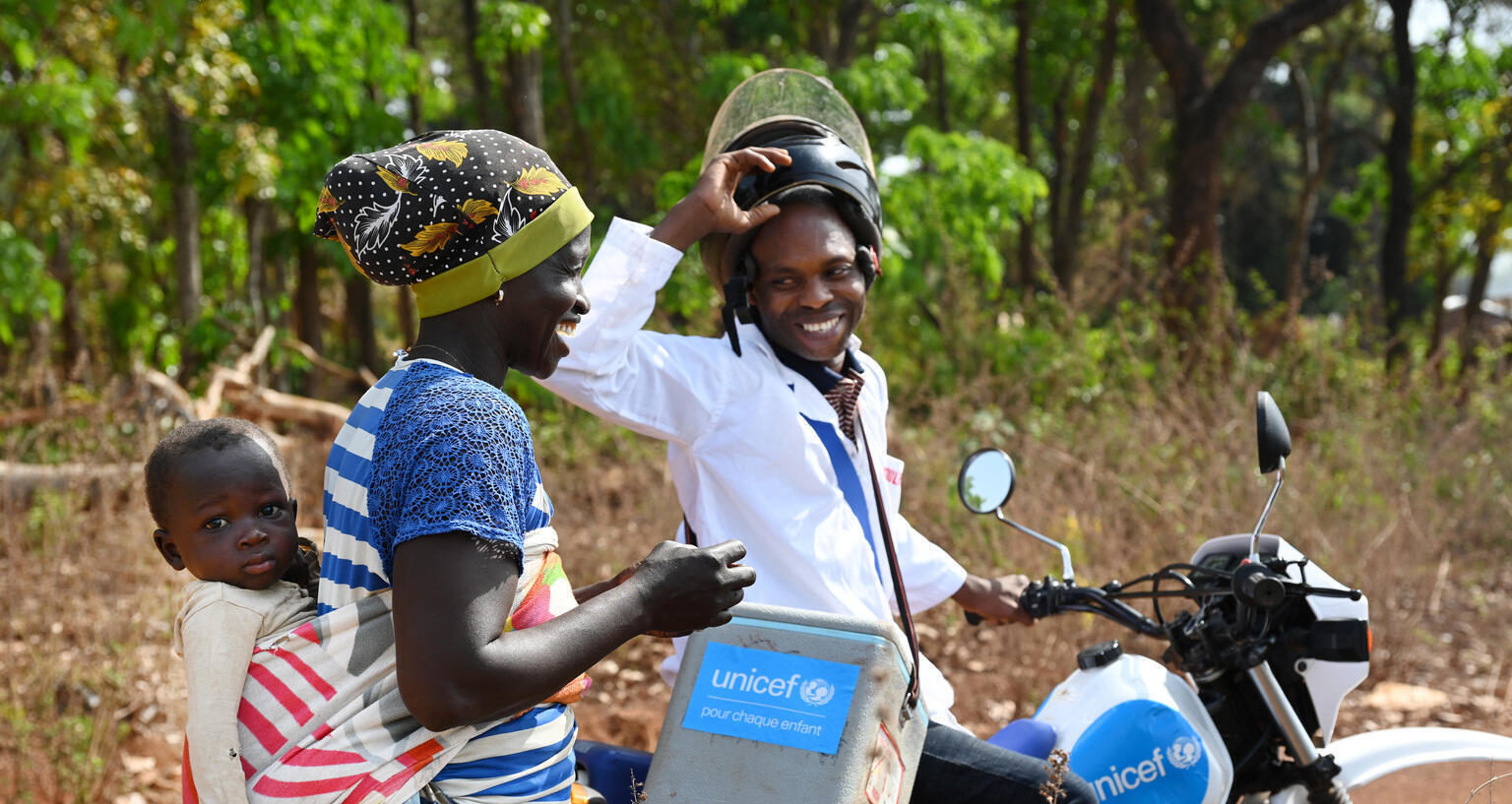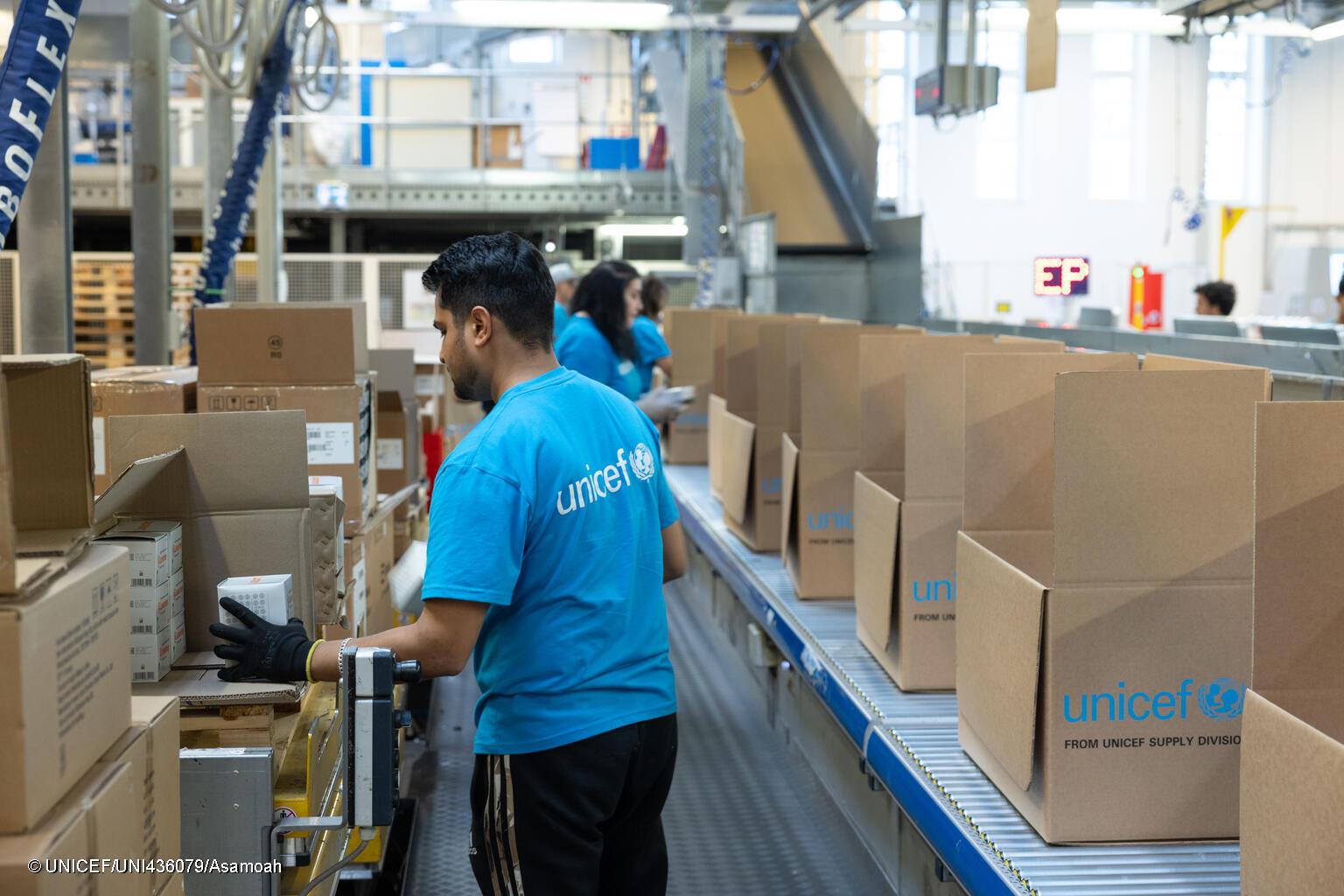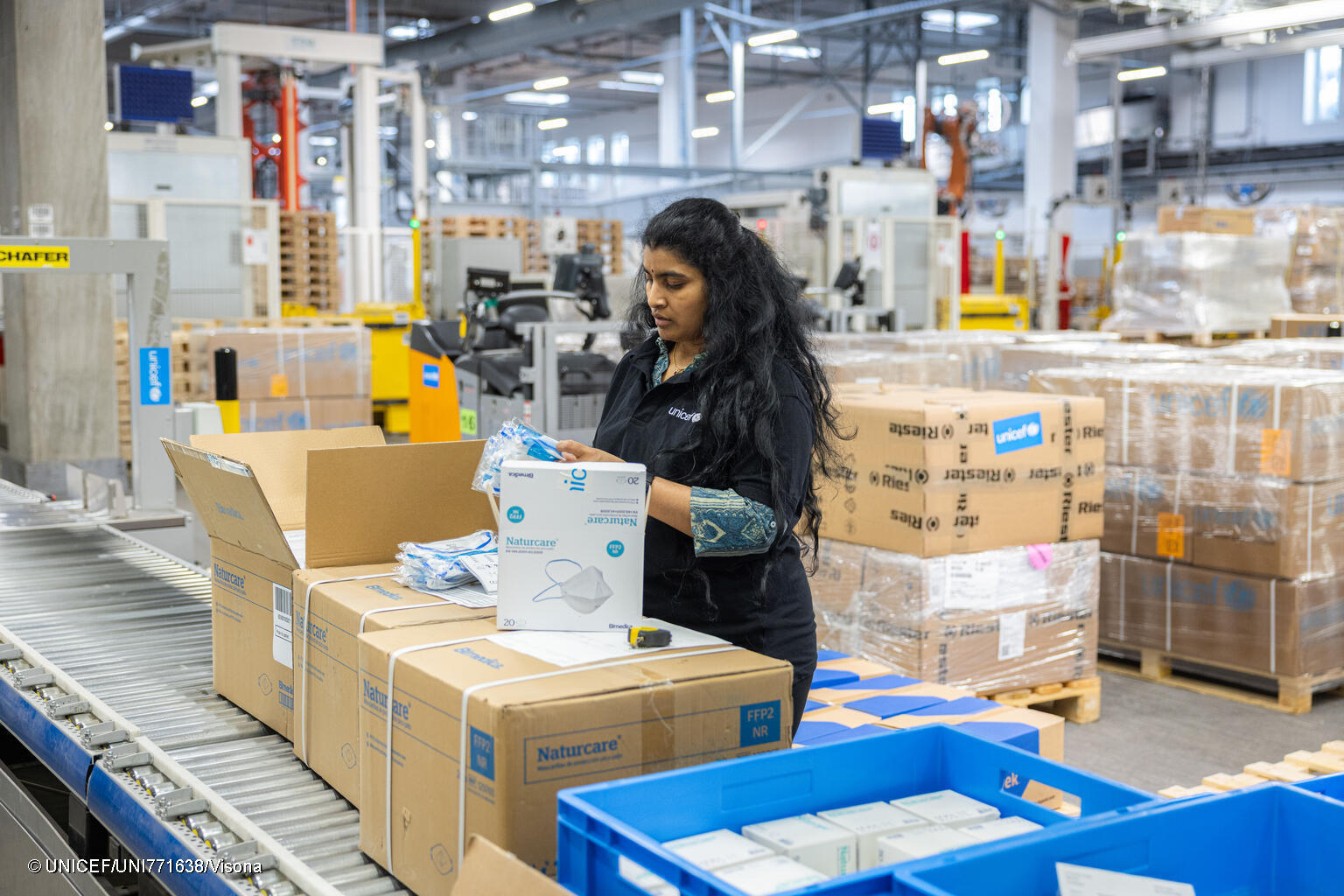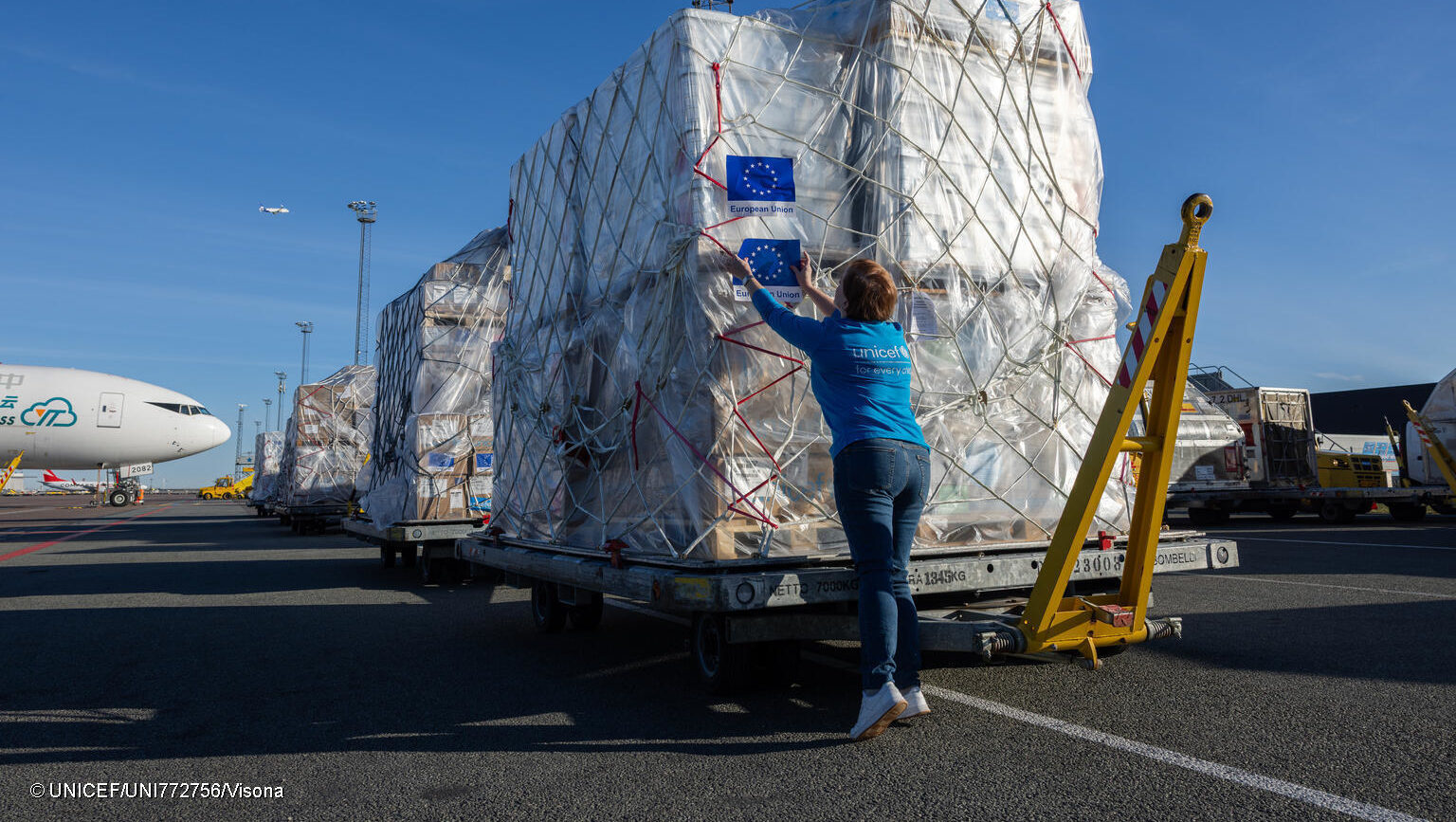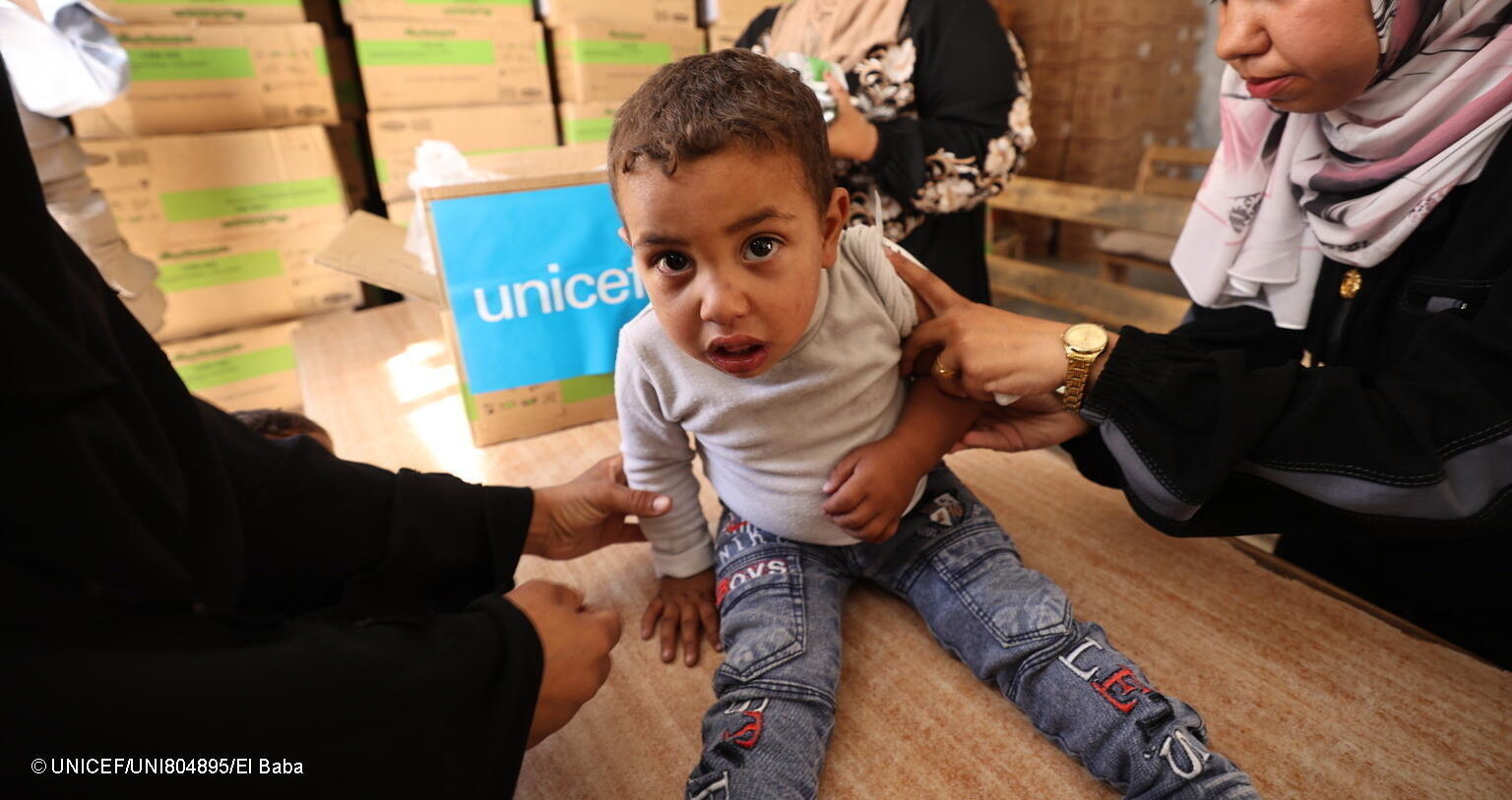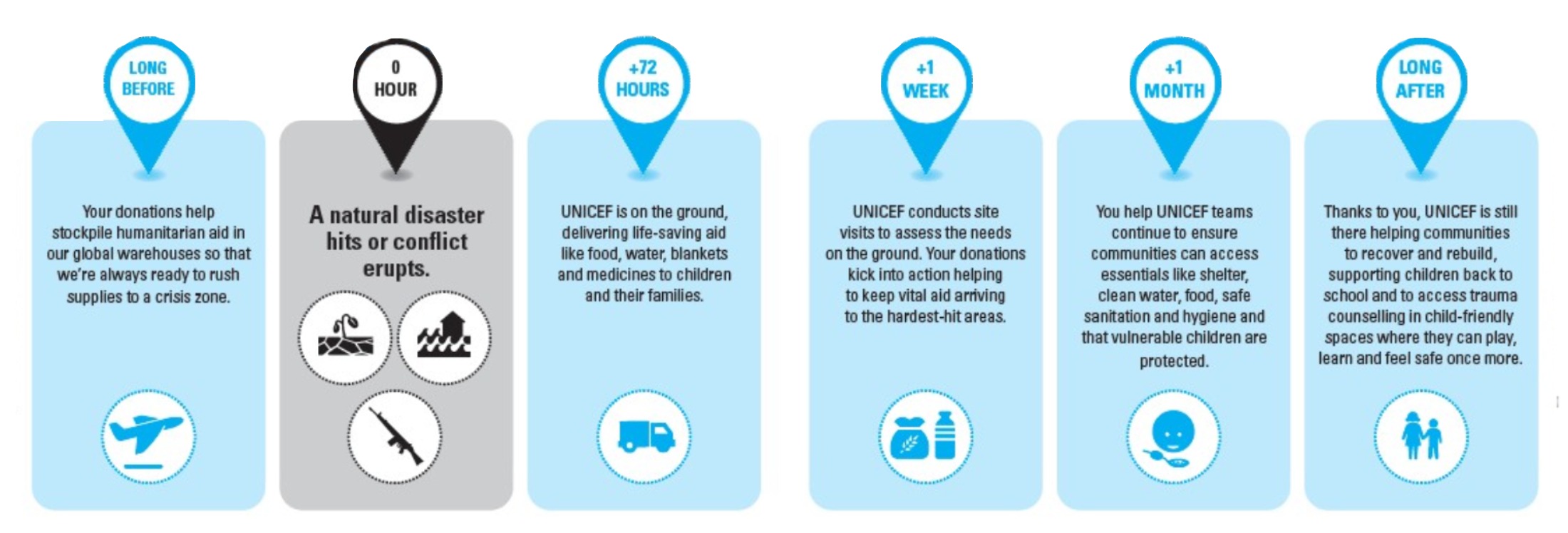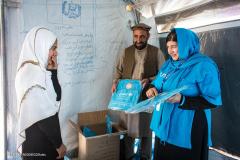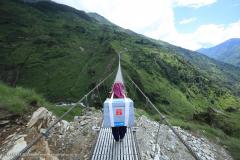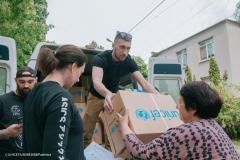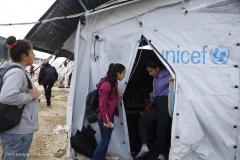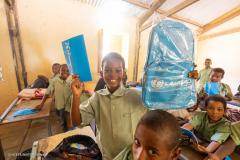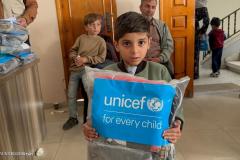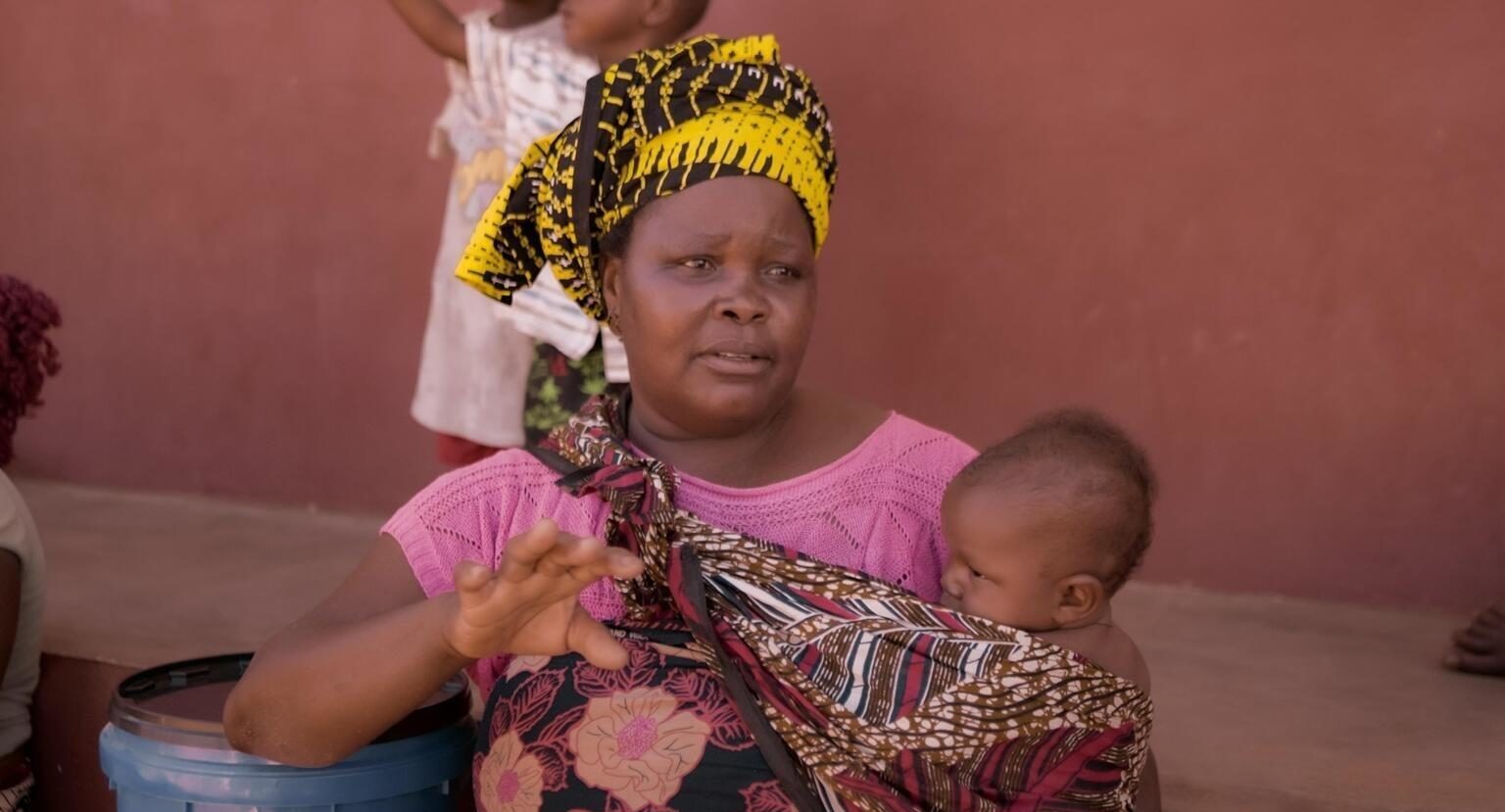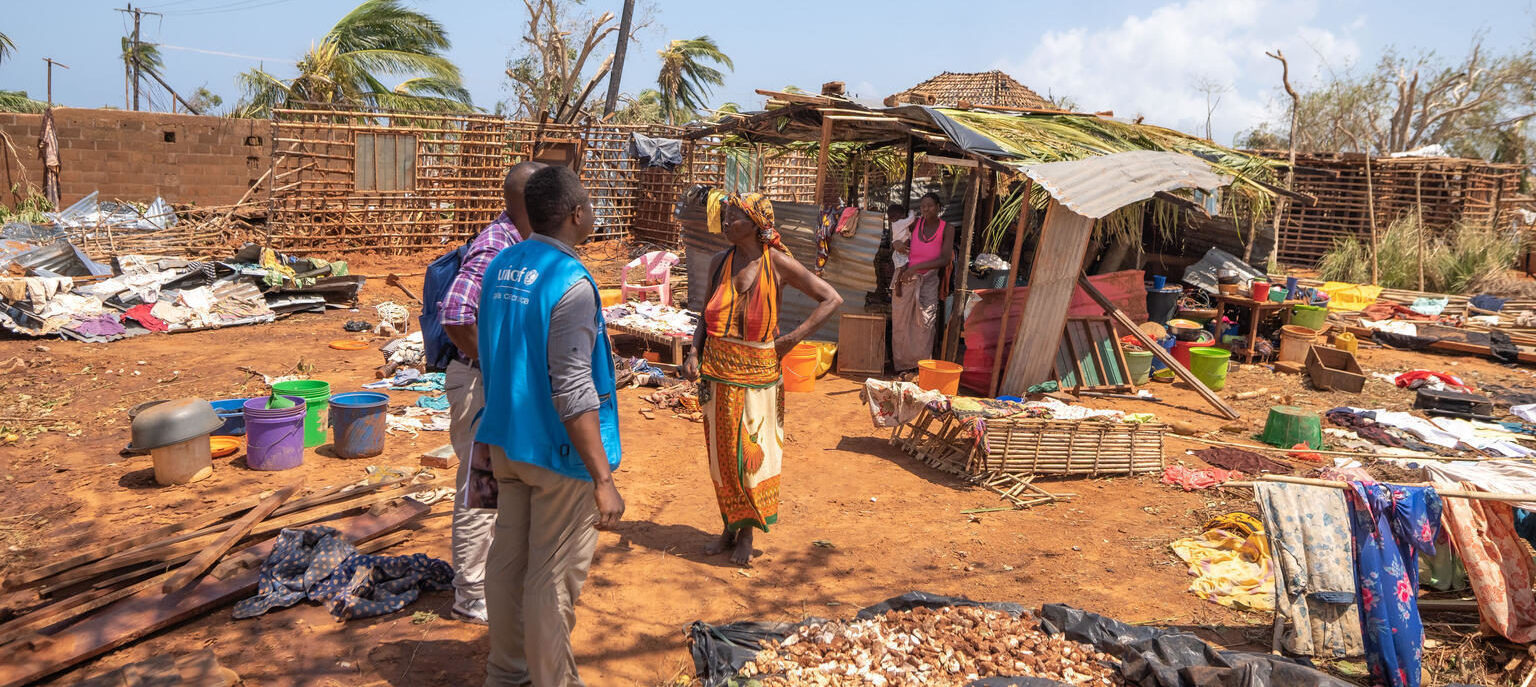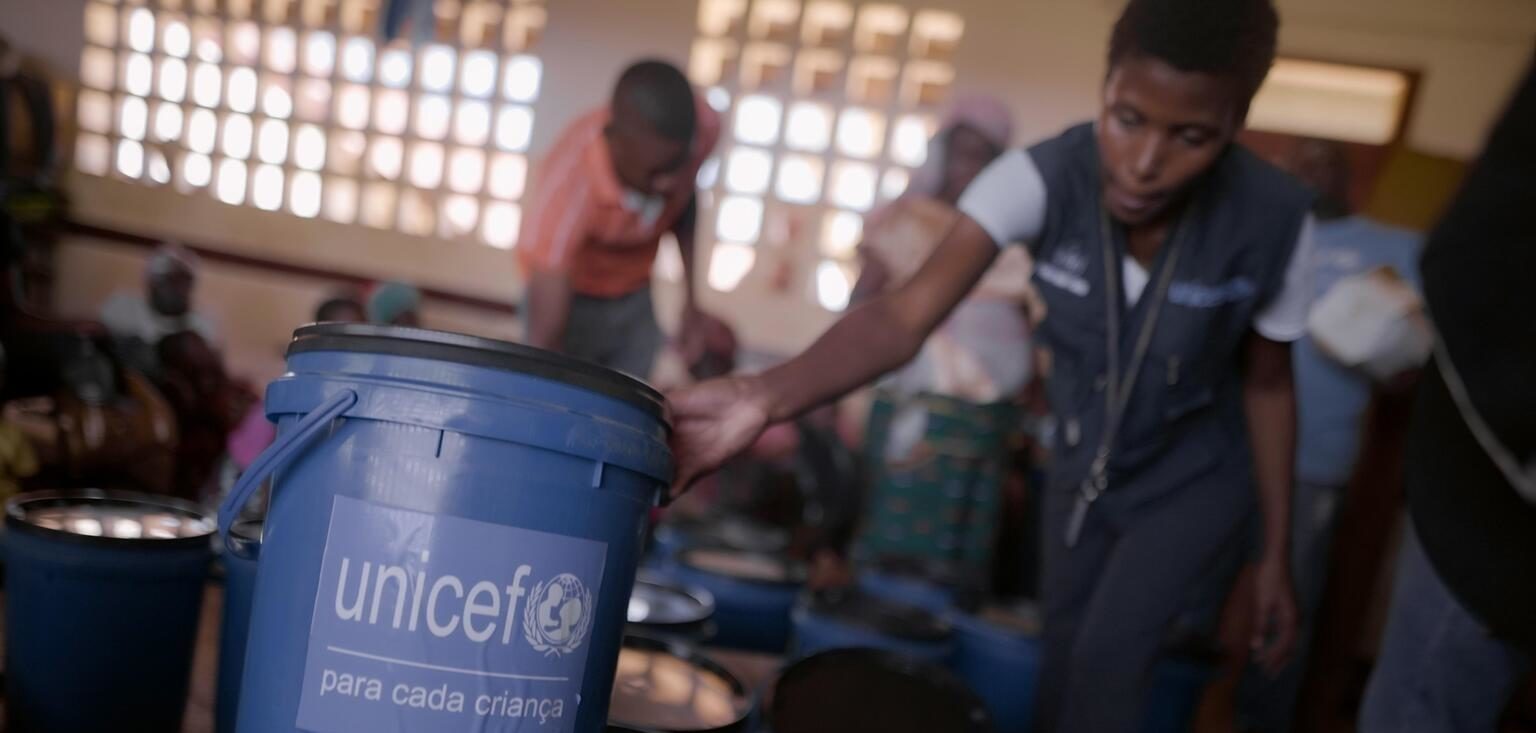A rapid response for children
In 24 hours: we’re loading supplies
Big yellow robots zip up, pull out pallets of supplies, and bring them down to the loading floor, where they’re put on a track to be packed. Once they’re packed, they wait on the lower floor of the warehouse.
To deal with any eventuality, we’ve developed 38 different pre-packed kits to deliver directly to the field.
These Emergency Survival Kits can include warm thermal blankets to keep displaced children warm in winter; Life-saving food and therapeutic milk to treat and save children who are starving; Water purification tablets and hygiene kits to prevent disease outbreaks; Vaccines to keep children protected; Midwifery kits to deliver babies; Incubators and generators to keep hospitals saving lives; and there is even a School-in-a-Box to keep children learning.
48 hours later: the plane journey
The team in the warehouse have 48 hours to organise the transportation and logistics of bringing tonnes of supplies from point A to point B.
The supplies generally leave UNICEF’s Copenhagen warehouse by cargo plane. The planes are often supplied by our corporate partners who donate cargo space from UNICEF’s hub to destinations where the need is greatest. Thanks to these collaborations, shipments can reach children in all parts of the world.
UNICEF has 876 staff in the field who work to ensure the local delivery of supplies. They have expertise in procurement, logistics, and freight handling.
In emergencies, the supplies are shipped by plane, but in some situations, supplies are transported by ship as it is a cheaper way to deliver products.
72 hours later: supplies arrive
The planes shipping supplies try to land wherever it is possible. If there is no runway to land at all, we turn to airdrops: many kits in the warehouse can survive a drop from the sky.
On the ground, our teams are already there to take care of the supplies. The moment the supplies arrive our logistic teams implement their distribution plan.
Some of our staff members have even transported supplies on mules, on their back or even in canoes to reach children.
Our teams bring the supplies to a safe, dry place where they can start unpacking and preparing the distribution.
Within 72 hours they are on the ground, making their way into the hands of children who desperately needed them. We make sure that each child in need receives the food, clothing or emergency kits they have been waiting for.
